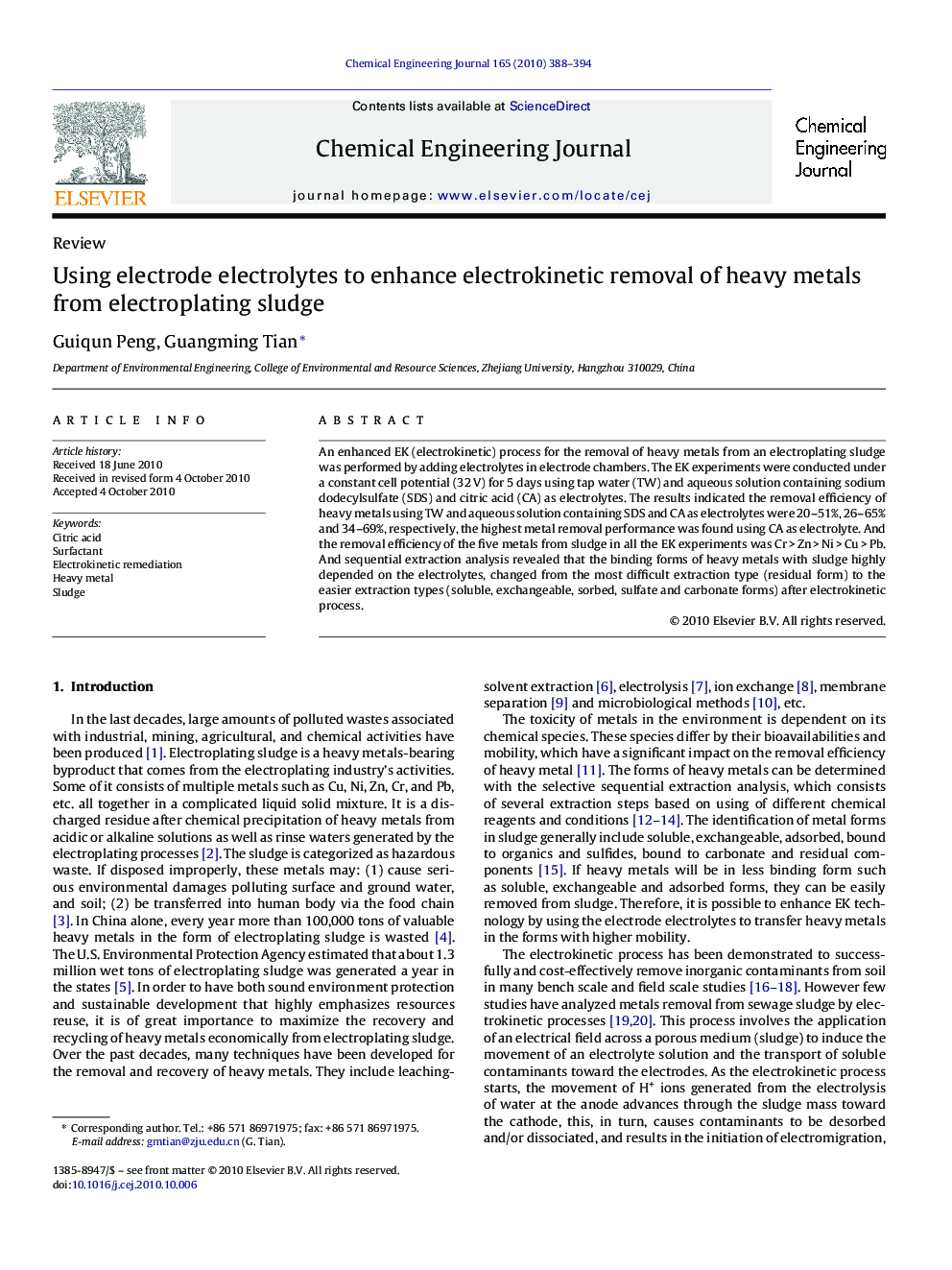| Article ID | Journal | Published Year | Pages | File Type |
|---|---|---|---|---|
| 151715 | Chemical Engineering Journal | 2010 | 7 Pages |
An enhanced EK (electrokinetic) process for the removal of heavy metals from an electroplating sludge was performed by adding electrolytes in electrode chambers. The EK experiments were conducted under a constant cell potential (32 V) for 5 days using tap water (TW) and aqueous solution containing sodium dodecylsulfate (SDS) and citric acid (CA) as electrolytes. The results indicated the removal efficiency of heavy metals using TW and aqueous solution containing SDS and CA as electrolytes were 20–51%, 26–65% and 34–69%, respectively, the highest metal removal performance was found using CA as electrolyte. And the removal efficiency of the five metals from sludge in all the EK experiments was Cr > Zn > Ni > Cu > Pb. And sequential extraction analysis revealed that the binding forms of heavy metals with sludge highly depended on the electrolytes, changed from the most difficult extraction type (residual form) to the easier extraction types (soluble, exchangeable, sorbed, sulfate and carbonate forms) after electrokinetic process.
